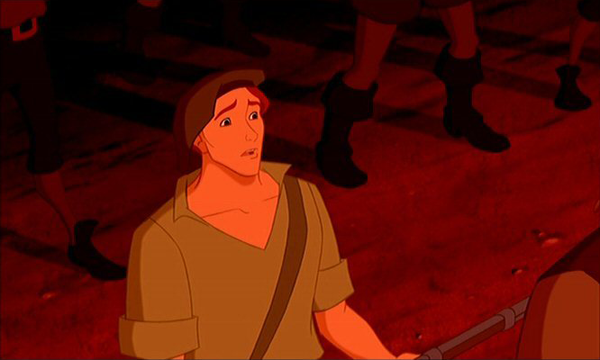Start at the beginning of this series or catch up on previous posts on the table of contents. Remember to hover over anything in red for extra commentary!
When we last left our noble heroes, Pocahontas & John Smith's ill-timed making out led to Kocoum getting stabbed, John getting captured and Pocahontas making a determined (*coughoriginalmoviesuckscough*) but unsuccessful plea to save his life.
Thomas runs back to the camp and sounds the alarm, with the only difference being no one is so fucking stupid as to ask “Who got him?” Ratcliffe doesn’t have any silly aside about the gold, he just tells Wiggins “If this is what it takes to get them to wipe out those savages, then so be it!” He’s also very cruel to Thomas for letting John get taken, and reminds Thomas that John risked his life to save him from drowning, and look how Thomas has failed him. Thomas is dejected and humiliated and is being pushed aside by the rest of the crew.

Oh, good. We still get sad Christian Bale eyebrows. For a moment there I was worried.






